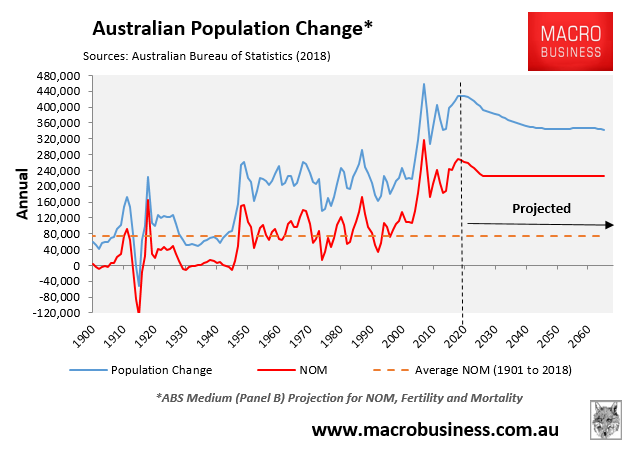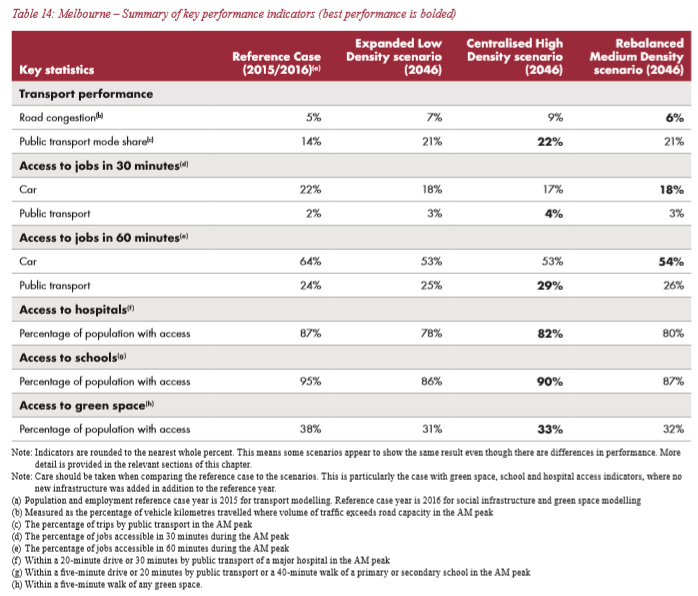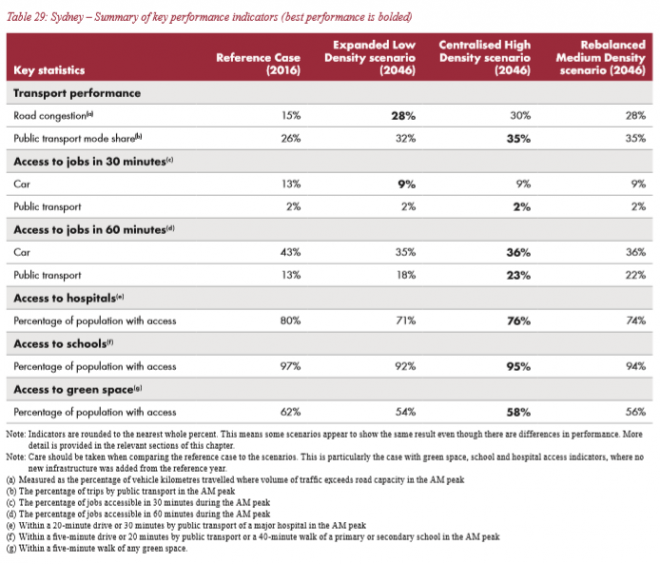Fifteen years of rapid population growth has unambiguously driven a massive infrastructure deficit across Australia’s cities, which Infrastructure Australia itself has regularly admitted is impossible to bridge.
For example, the 2013 National Infrastructure Plan produced by Infrastructure Australia concluded that “we still face a significant infrastructure deficit, estimated at around A$300 billion”.
Infrastructure Australia’s 2018 report, entitled Planning Liveable Cities, found that Australia’s infrastructure provision is failing badly to keep pace with rapid population growth:
“Infrastructure delivery is struggling to keep pace with rapid population growth and change. Our largest cities are ‘playing catch up’ in delivering infrastructure to support population growth… Our infrastructure funding mechanisms have not kept pace with growth… Communities are increasingly disappointed by their experience of growth…”
Infrastructure Australia has also regularly warned on the rising cost of infrastructure provision caused by rapid population growth. For example, its 2018 Planning Liveable Cities report noted:
“…construction of new infrastructure is often more expensive, due to the need to tunnel under existing structures or purchase land at higher costs. The small scale, incremental nature of growth in established areas can also lead to an over-reliance on existing infrastructure, which can result in congestion and overcrowding”.
Last week’s damning audit by Infrastructure Australia was more of the same, warning of growing infrastructure bottlenecks and rising costs across roads, rail, schools, electricity and water as Australia’s population balloons to a projected to 31.4 million people by 2031.
The response, by and large, from Australia’s mainstream media has been all about treating the symptom – magically building more infrastructure and ‘better planning – rather than treating the primary cause: reducing population growth by lowering immigration back to historical levels:

The SMH’s Elizabeth Farrelly – a former Sydney Councillor- encapsulates this deluded mainstream view, penning the following drivel over the weekend:
Because actually, congestion isn’t about too many people, or even too little infrastructure. It’s about near-total absence of planning…
True. People complain about immigration, population, height, density, congestion. Also true, if there were no people there’d be no issue. But unless we’re actually talking forced sterilisation here, that’s not a helpful insight.
Reducing immigration may reduce the demand for infrastructure. It may save the putative $38 billion “congestion costs” that Infrastructure Australia threatens by 2031 and the $600 billion spend.
Then again, maybe it’s the other way around. Maybe we need the immigration in order to justify the infrastructure spend that will keep the economy alive…
And maybe, with decent planning – or in fact any planning – Australia could be a lot more fertile, and a lot more fun, than we think.
Thankfully, like a beacon on the hill, The Canberra Times’ Crispin Hull expertly demolished the fake ‘just build more and plan better’ non-solution:
This is not a joke. A patient comes to the doctor and says: “Doc, I have put on quite a bit of weight. I cannot fit into my clothes. I cannot fit into the office chair. And my blood pressure is right up so I suppose my arteries are clogged.”
“Well,” says the doctor. “We will have to get those arteries unclogged even if it costs a lot of money. And you must buy a new chair so you are comfortable at work. And you can buy new bigger clothes so they fit your new size. Other than that you can keep eating the same or more. We need not worry about how many calories you bring into your body.”
It sounds bizarre. What doctor would advise expensive “treatment” of symptoms and say nothing about the underlying cause of the patient getting bigger and bigger to the detriment of the patient’s well-being?
Well a similar thing is happening with the size of Australia. We are getting far too big and instead of trimming the intake, the government and all of the vested interests say we must just build more infrastructure.
This week, Infrastructure Australia published its Audit and found that “road congestion and public transport crowding cost the Australian economy $19 billion in 2016. Without continued investment in our cities, this will double by 2031 to reach close to $40 billion.
“This impacts quality of life, as well as our economic productivity and competitiveness as a nation. . . .
“More than $123 billion of construction work has commenced since 2015, with a committed forward pipeline of over $200 billion. However, there is much more to do to ease the pressures of growth. . . .
“Infrastructure in our four largest cities – Sydney, Melbourne, Brisbane and Perth – is failing to keep pace with rapid population growth, particularly on the urban fringe. With our population projected to grow by 24% to reach 31.4 million by 2034, our largest cities are expected to see pressure on access to infrastructure.”
It sounds like the Australian patient is choking to death and the arteries cannot keep up, but the doctor refuses to prescribe a lower intake. The elephant in the room is ignored.
Infrastructure Australia just assumes the high population growth – now at 435,000 a year – has to happen and that there is nothing we can do about it.
But we can. John Howard could have just as easily have said, “We decide how many people come to Australia and when they can come.”
But no. He pretended to be securing the borders by clamping down on people smuggling by boat while quietly ramping immigration through airports from around 70,000 to now more than 200,000 a year.Small wonder Infrastructure Australia says we cannot keep up. It says we have “a mounting maintenance backlog”…
Meanwhile everyone else suffers. Wages in Australia have stagnated since the Howard ramp-up of immigration and the costs people cannot escape have spiralled: health, education, energy.
We now have “per capita” recession in Australia. That is, on average people’s incomes are contracting. And that is average. Given the top end is doing much better it means those in the middle and bottom are really being squeezed.
We have an illusion of decades of notional economic growth because we have a lot more people producing things. But they are consuming it as well and demanding more infrastructure and government services, so the absolute growth in GDP may give the government a proud boast, but it is an empty one because most people are becoming worse off…
Yet there is not even the hint of a suggestion by Infrastructure Australia that its expensive Infrastructure prescription could be easily avoided and the lives of Australians made better if we cut population growth…
The main reason average Australians feel worse off is because of the high population growth in the past two decades. Immigration should be drastically cut before the anger at the economic squeeze is manipulated to be misdirected at ethnic, cultural or religious differences.
Adding roughly a Canberra-worth of population to Australia each and every year – with 90,000 to 110,000 people projected for Sydney and Melbourne alone – requires an impossible amount of investment just to keep up. This explains why Australia’s infrastructure deficit has fallen so badly behind over the past 15 years, and why infrastructure deficits will continue to grow under the bipartisan mass immigration ‘Big Australia’ policy, in turn destroying residents’ living standards.
The cold hard truth is that the quantity of infrastructure investment required for a ‘Big Australia’ is mind boggling and impossible to meet. Therefore, expecting infrastructure to magically catch-up as Australia adds a projected 17.5 million people over the next half century, and Sydney and Melbourne double in size, is pure fantasy. Not even Infrastructure Australia believes this is possible.
Cut immigration.



